Table of Contents
Digital encounters dominate much of the communications world, with contact center experiences taking center stage.
What do customers do when they face a problem? They contact your customer service team. And often, after hunting around your site for a phone number, they settle for a live chat.
From there, how will your customer service team resolve their concerns? Through a contact center platform. But it takes more than software to deliver a great contact center experience.
In this guide, we’ll help you understand how to craft an unrivaled contact center experience for your customers, and how to bring it to life. You can do it — we’ll walk you through the steps.
What Is a Contact Center Experience?
A contact center experience is a customer’s perceived quality of interactions and service provided by a company’s contact center or customer support team. It includes everything from their initial request, how long they wait, the resolution, and any additional follow-up items.
Contact centers are specialized departments or teams that handle customer inquiries such as sales calls, support requests, and other forms of communication. These will usually go through channels, such as phone calls, emails, live chats, or social media.
The contact center experience is key to customer satisfaction and influences the customer’s perception of a business. A positive contact center experience builds trust, loyalty, and long-term relationships, while a negative one leads to customer frustration and churn.
Why the Contact Center Experience Matters
Over 70% of customers stop doing business with a brand due to a poor customer service experience. Since your contact center is tied to your overall customer experience, poor customer service interactions naturally lead to a negative contact center experience.
And what does a dissatisfied customer do?
- Lodge a complaint
- Leave a bad review
- Take their business to a competitor
- Let their contract lapse
- Expect continued negative interactions
- Tell others about their experience
- Demand a chargeback or refund on payments
How your brand is seen, whether it attracts, retains, or loses customers, depends heavily on the type of interactions they have with you. Your contact center must be prepared to provide qualified and rapid support to meet customers’ needs and expectations — or be ready to lose to a competitor that will.
Thinking about your contact center experience doesn’t have to be only about mitigating bad experiences. In fact, these touchpoints offer many ways to extend great customer interactions.
Consumers are five times more likely to recommend a brand after an excellent customer service experience. Qualtrics discovered that consumers are 350% more likely to purchase from a business after receiving a positive customer experience.
What does a satisfied customer do?
- Appreciate your services
- Leave a positive review
- Turn down proposals from competitors
- Renew their contract
- Anticipate positive future interactions
- Tell others about your excellent customer support
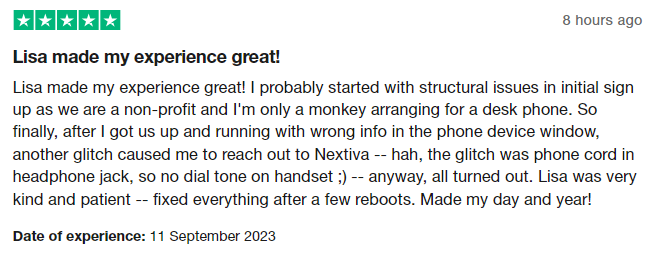
Creating a quality contact center experience is your doorway to gaining better customer satisfaction, a competitive advantage, cost efficiency, and continuous improvement.
How is a contact center different from a call center?
Call centers primarily handle customer queries through phone calls. In contrast, contact centers provide a more rounded customer support experience through digital channels, including SMS text messaging, email, web chat, and social media.
Below are the key differences between the two:
| Call Center | Contact Center | |
|---|---|---|
| Channel | Phone calls | Phone, email, live chat, social media, and video |
| Analytics | Call reports, such as call times, answer speed, and abandon rate | Multichannel analytics from request to resolution |
| Interaction | A single live interaction | Multiple touchpoints for customer engagement |
| Customer experience | Good, but might need to call back and follow up on outstanding requests | Great; agents can view all past support interactions at once |
| Integrations | Limited integration capabilities, mostly along customer relationship management (CRM) or email | Extensive integration capabilities across the helpdesk, CRM, and sales tools |
Choosing between a call center and a contact center depends on your customers’ communication preferences.
A cloud-based call center is a good fit if your customers contact you mainly through phone calls, you have few agents, or you are a small business.
If customers interact with you across multiple channels or you have a large team, a contact center is ideal to meet their expectations and deliver a great customer experience.
What Contributes to a Positive Contact Center Experience?
The number one thing customers want is a positive and easy contact experience.
Let’s take contacting a bank’s customer service as an example and distill the key elements that make a positive contact center experience.
1) Accessibility and convenience
Customers should be able to easily reach the bank through multiple channels such as phone, email, or chat. A positive experience starts with accessibility.
Customers like to choose a convenient method so they don’t have to wait in long queues or navigate complex automated systems.
However, at times when your agents are busy, customers have to wait in a queue to connect. For such a scenario, consider setting up an interactive voice response (IVR) system that’s easy to follow and navigate.
The most frustrating aspect of customer service is the hold time when waiting for a customer support representative. So, you need to be careful with your IVR system. This needs to be as interactive as possible to reduce customer frustration.
2) Knowledgeable and empathetic staff
The bank’s support team needs to know the bank’s products, services, and policies well. Equally important is empathy; understanding the customer’s concerns and frustrations creates a human connection.
Compassionate communication helps resolve problems efficiently and makes customers feel heard and valued.
3) Personalization
Around 68% of people feel brands should provide a personalized experience in every interaction; the same expectation applies to customer support.
Addressing customers by name and understanding their banking habits and preferences can make them feel valued and appreciated. One way to personalize a customer’s experience is through screen pops.
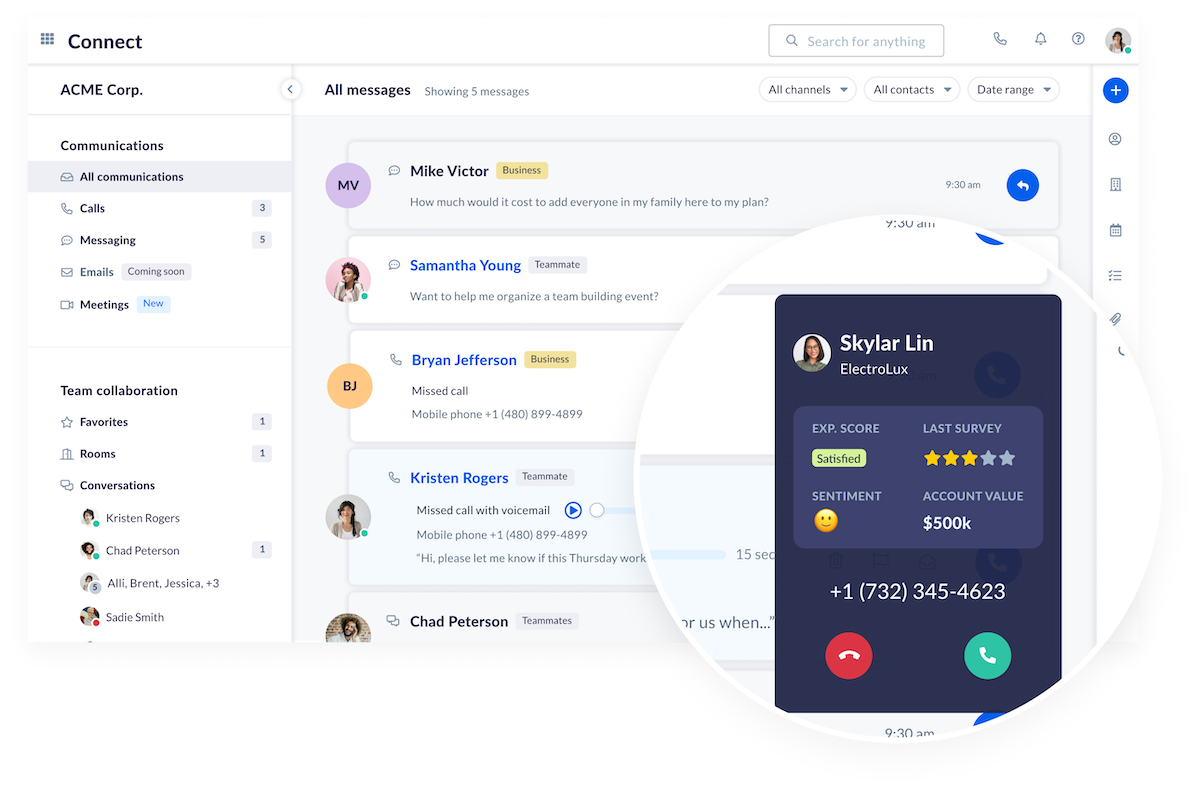
A screen pop presents advanced caller information to a contact center agent, displaying relevant details such as account numbers, purchases, and help desk tickets. This enables the agent answering the call to know the customer’s history and to offer better solutions.
A personalized interaction builds customer trust and speeds up the resolution process.
4) The right technology and automation
Staff equipped with appropriate tools are more confident and have fewer problems meeting the customers’ needs.
Imagine if a customer is online, and your banking agent is tied up fixing a lagging system, or if you can’t find the customer’s previous records and you have no clue what to work with.
Using the right contact center technology and systems creates a better contact center experience. How is this done?
- They integrate your CRM software with your contact center to have all of the customer data in one place.
- They leverage advanced contact center features like automatic call distribution (ACD), a business phone feature that intelligently distributes calls based on traffic, agent availability, etc., so no calls are lost in the queue.
- They use data analytics to track and measure your contact center performance.
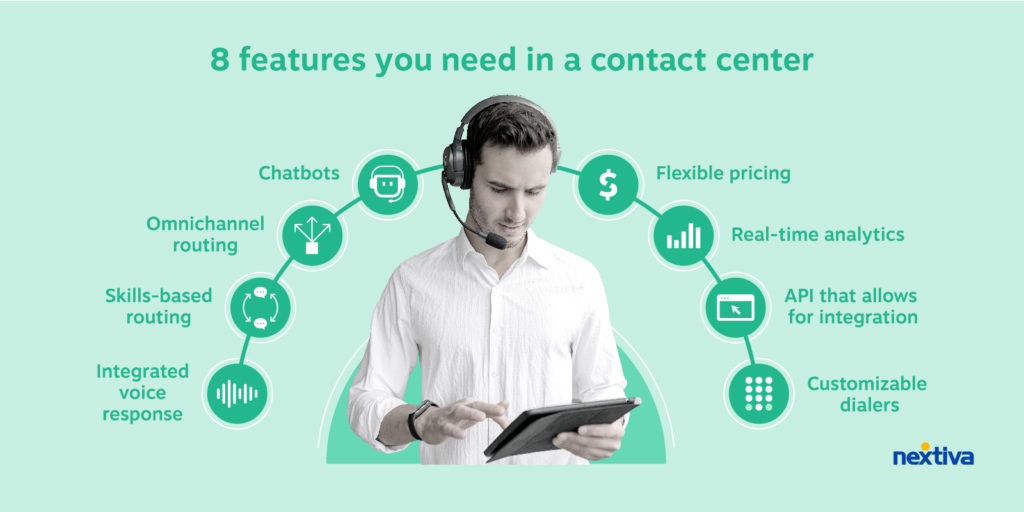
Automation reduces manual handling, improves workflows, and contributes to a positive contact center experience.
5) Post-interaction support and feedback
Following up with customers to ensure their issues have been resolved and obtaining feedback on the services offered further solidifies a positive contact center experience.
Listening to customer feedback shows that the bank cares about their opinions and provides valuable insights for continuous improvement.
Post-call interactions and collecting feedback can be tedious. However, a connected communications platform, such as Nextiva, can save the day by helping you create quick and easily customizable surveys.
You get relevant insights and can respond to any feedback from a single interface.
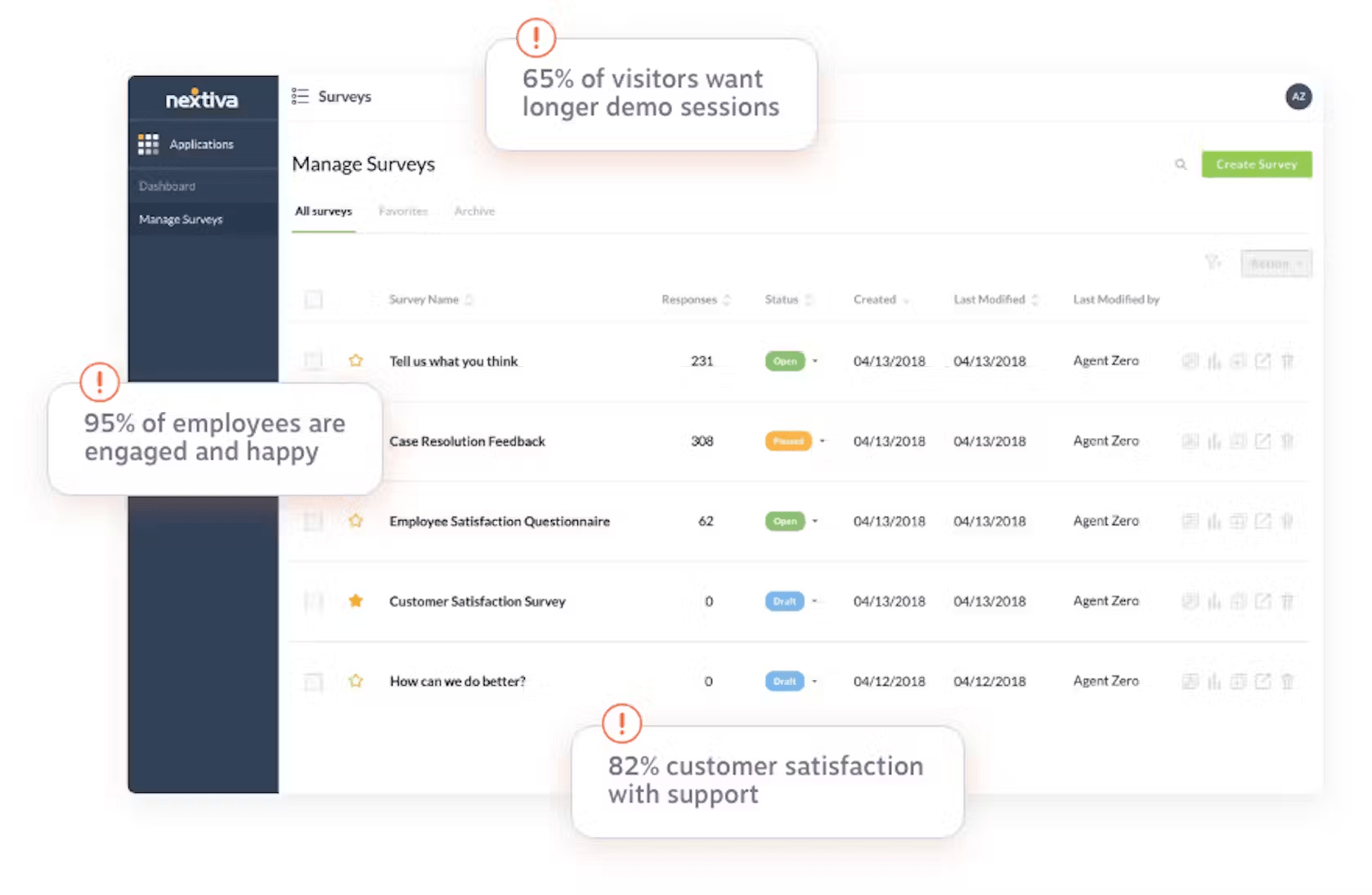
By integrating accessibility, empathy, technology, and personalization into your customer service process, you create a positive, lasting impression, which encourages customer loyalty and advocacy.
Types of Contact Centers
To create a better contact center experience, you need to know the type of contact center you have, or need, for your business.
Inbound call center
With an inbound contact center, customers contact you directly over the phone.
To build a good contact center experience, consider whether you:
An inbound contact center focuses mainly on a first-call resolution practice. When that’s not possible, you could turn to an outbound contact center to proactively reach out to customers.
Outbound contact center
An outbound contact center drives customer retention and business growth by supporting not only sales conversations but also other use cases for the business.
For instance, increasing customer satisfaction through proactive account management, addressing customer dissatisfaction, and executing customer marketing initiatives.
A well-oiled outbound call center, allows you to:
- Initiate outbound calls to address customer issues
- Prioritize respectful and non-intrusive communication at any touchpoint
- Offer options like customer callbacks to mitigate long wait times
Multichannel contact center
A multichannel contact center connects customers through multiple channels: text messaging, voice, email, web chat, or social media. It offers customers flexibility and convenience in choosing their preferred communication method.
Here are some ways to build a positive multichannel contact center experience:
- Monitor your channels to ensure consistent service quality and consistency
- Integrate customer data across all of your channels to create a 360° view of every customer
- Connect your contact center software with other business systems (e.g., CRM or ticketing systems)
- Define clear escalation paths for complex issues that require channel switching
The last item above is key. For example, if a customer starts a conversation via a chat function but the issue is complex, make a smooth transition to a phone call or video chat. With a proactive approach, your team can be fully equipped to serve customers in the moment.
Omnichannel contact center
The next natural step up from a multichannel contact center is an omnichannel one. The omnichannel contact center combines all your communication channels to provide a holistic view of every agent who is handling a request.
To build great omnichannel experiences you could:
- Use customer data to create detailed profiles, personalize interactions, and offer tailored solutions.
- Implement predictive analytics to anticipate customer needs. This would be based on past interactions and knowledge base activity.
- Plug intelligent chatbots to handle routine queries, provide instant answers, and escalate complex problems to human agents.
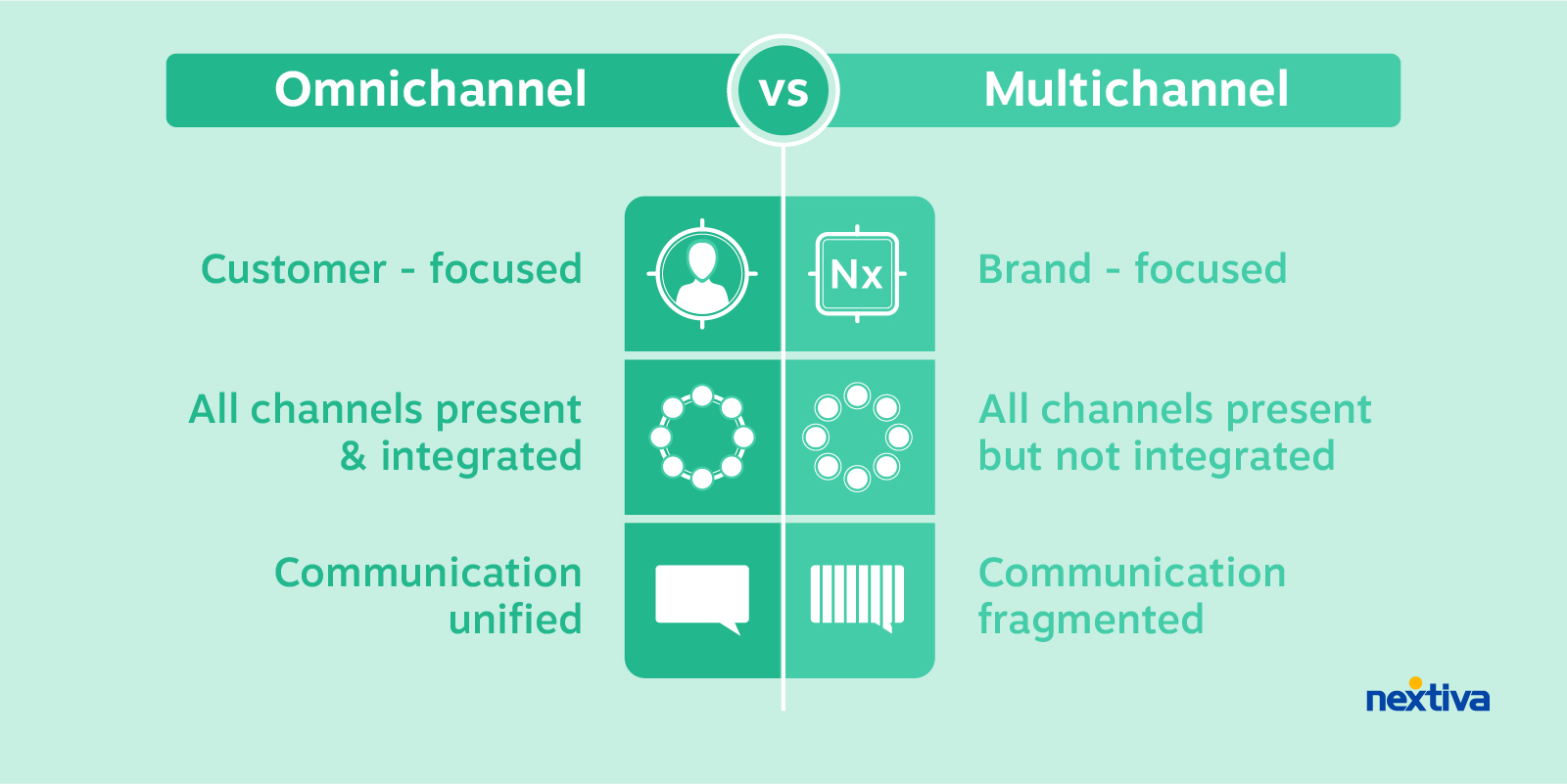
4 Simple Ways to Improve Contact Center Experiences
1) Elevate your staff’s customer service expertise
Inadequate staff training and expertise are often the culprits of poor customer satisfaction and ineffective contact center management. Investing in your staff’s skills is essential to creating an exceptional contact center experience.
Begin by conducting preparatory and refresher training so all employees know general and company-specific customer service best practices. Then, train your team to offer the right technical support.
Customers are impatient when it comes to technical issues. And, it adds to their frustration if your customer service team can’t provide expert solutions quickly.
Conduct routine quality assurance assessments to measure agent performance. If certain agents are falling behind, consider tailored training or pairing them with high-performing agents to diversify their learning journey.
2) Implement quality contact center software
Contact center as a service (CCaaS) is a subscription-based contact center deployed via the cloud. It removes the hassle of maintaining on-site contact center infrastructure.
When selecting a CCaaS provider, carefully consider your specific needs. For example, Nextiva’s cloud-based contact center is an excellent choice for small and medium-sized businesses, offering an easy-to-deploy contact center that is rich in features, has 99.999% uptime, and offers best-in-class encryption and security.
And if you need a different functionality or capability, you can upgrade it whenever you need.
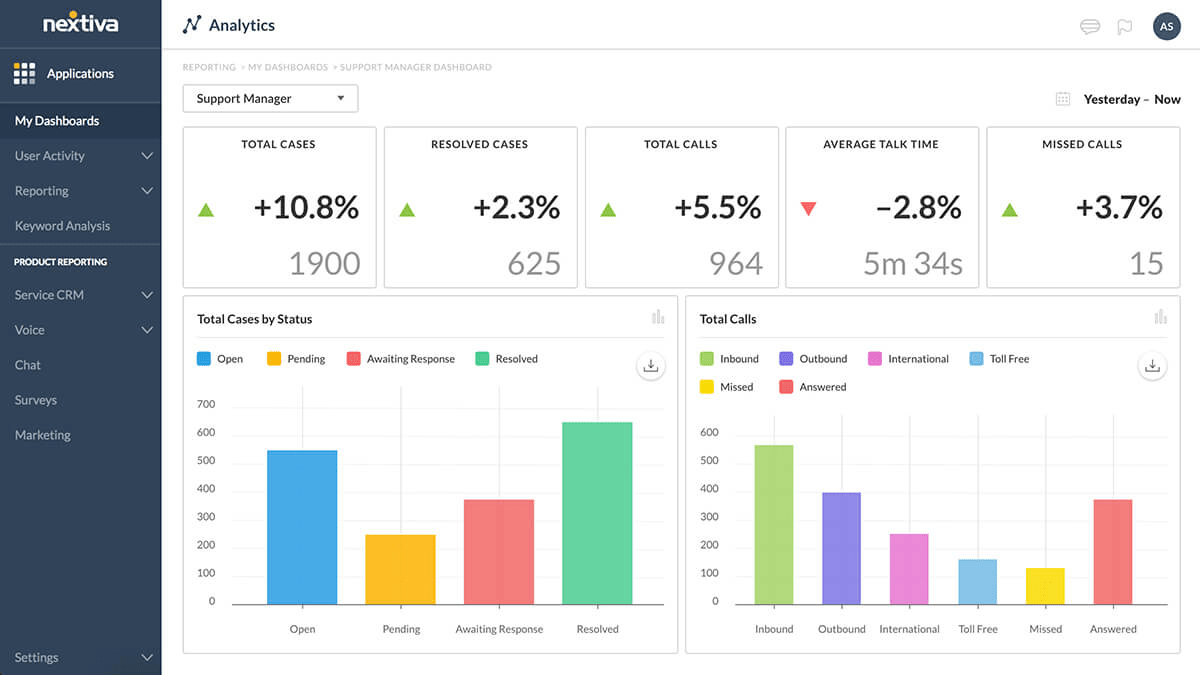
You can prioritize your requirements for a CCaaS into the following categories:
- Must-haves (non-negotiable for providing customer service)
- Should be present (common characteristics, with occasional exceptions)
- Nice-to-haves (features that improve your contact center)
- Not urgent (features for future consideration)
3) Measure and optimize contact center performance
Use contact center reporting to measure and manage all your customer touchpoints in real time. Evaluate both call-specific (call volume, average handle time) and experience-specific (Net Promoter Score) metrics to know where you’re flourishing or lacking.
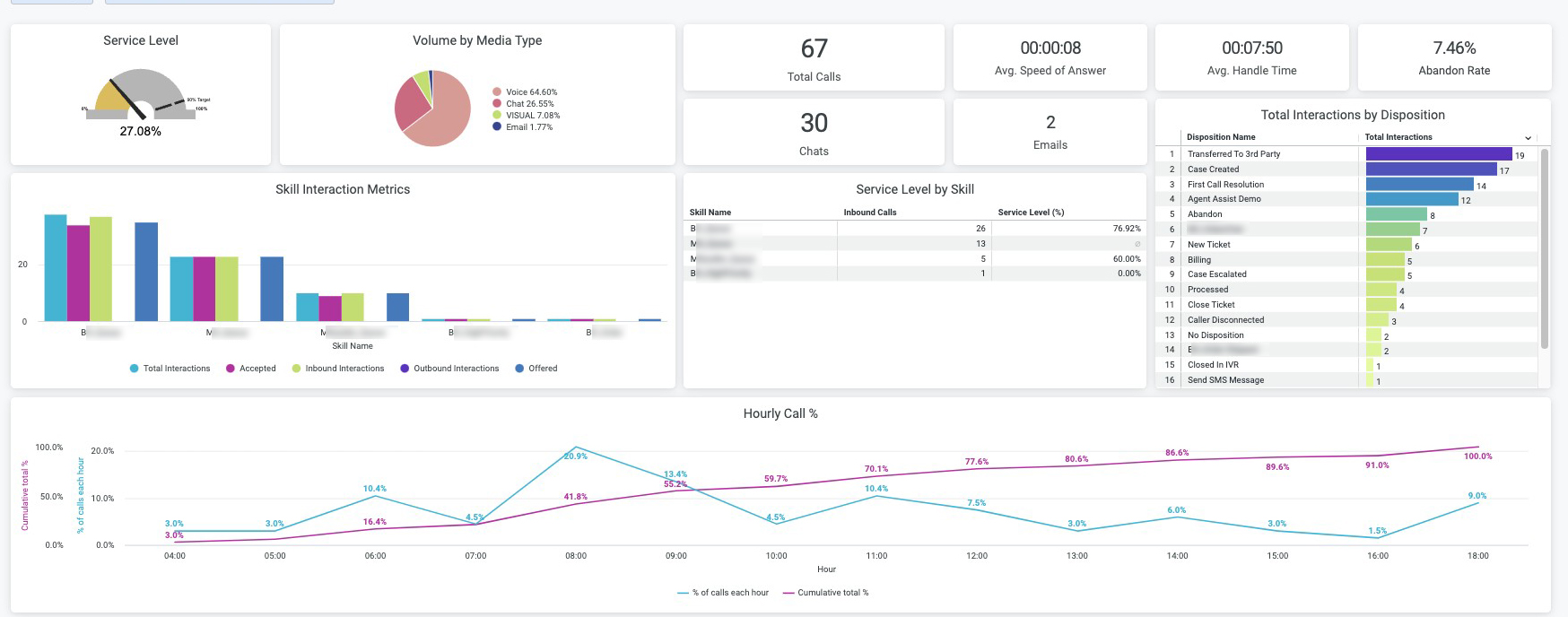
For example, if long wait times are a concern, consider implementing chatbots to quickly respond to customer queries. Or, if the average handle time has increased, investigate whether it’s agent performance or software quality issues that are causing the delays.
4) Gather real customer feedback
Want to know what customers think of your contact center?
Ask them!
One way is to use the NPS method and ask:
ℹ️ “How likely are you to recommend our company to a friend or colleague?”
ℹ️ Responses range from 0 (not likely) to 10 (extremely likely).
You can also create a more in-depth customer satisfaction survey for more insights. The hardest part about conducting these surveys is getting clients to respond.
One option is to offer customers incentives to reward them for the time they spent completing your survey.
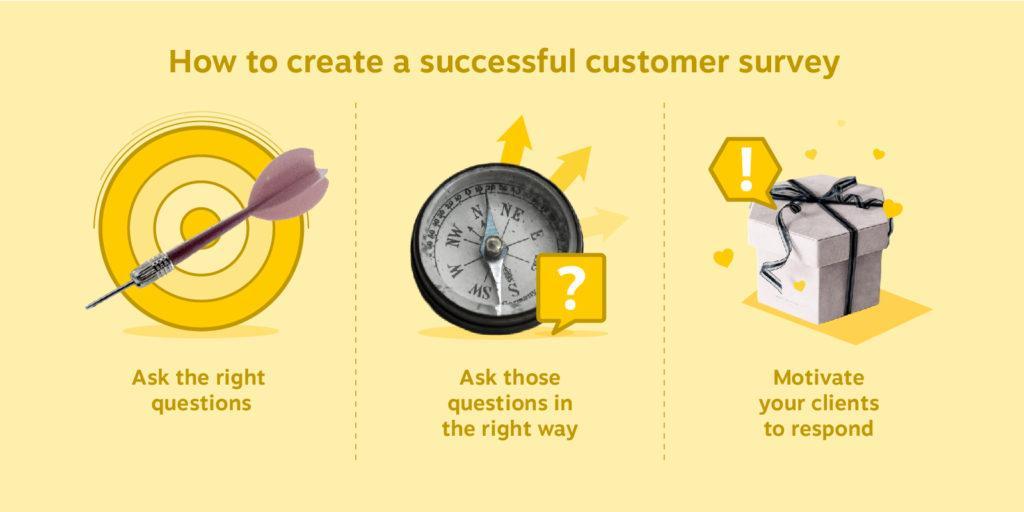
How Successful Is Your Contact Center?
Your contact center’s success is reflected in customer satisfaction and loyalty.
Metrics like NPS, wait times, and customer churn rates indicate how customers perceive your business. Integrating your contact center software, channels, and reports into one cohesive view gives you valuable insights to refine and improve the customer experience.
Integrate tools like Nextiva’s Contact Center for omnichannel support, custom routing, and advanced reporting to have your contact center meet customer expectations and fuel your business growth.
Want to see what your next contact center should look like? Get in touch for a personalized demo.




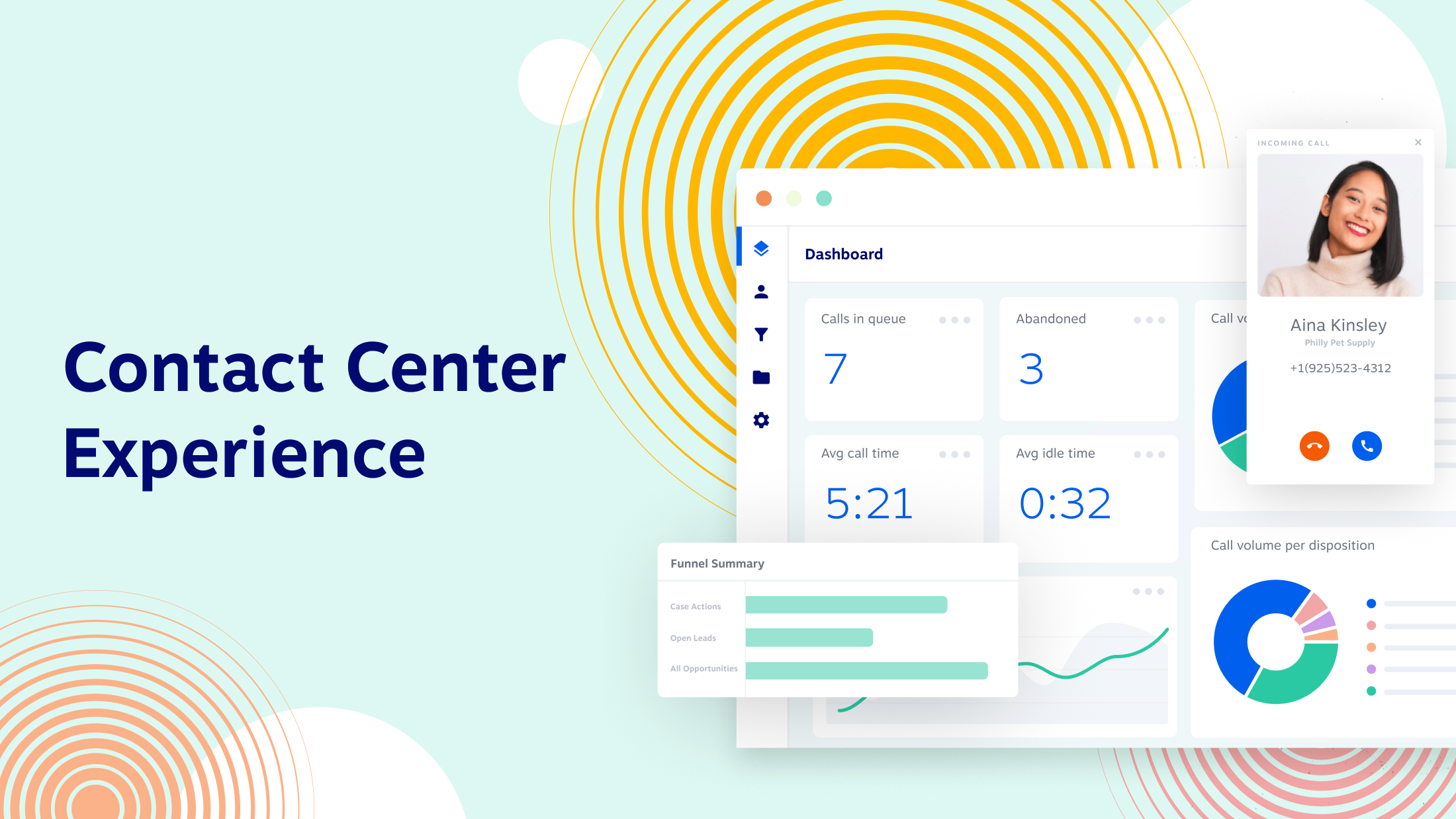
More Stories
10 merek aksesori smartphone terbaik di tahun 2024
10 Rumah Sakit Terbaik di Singapura
7 motor sport paling terkenal dan mahal di dunia